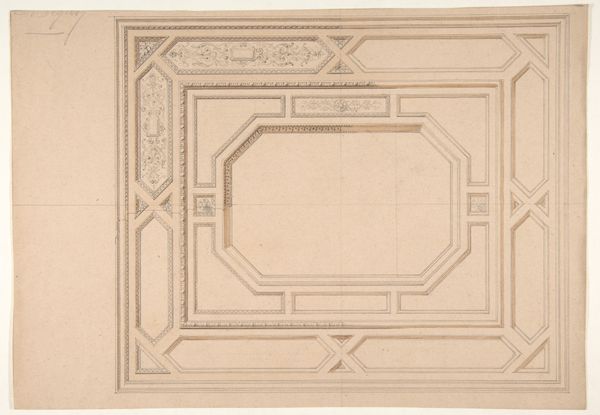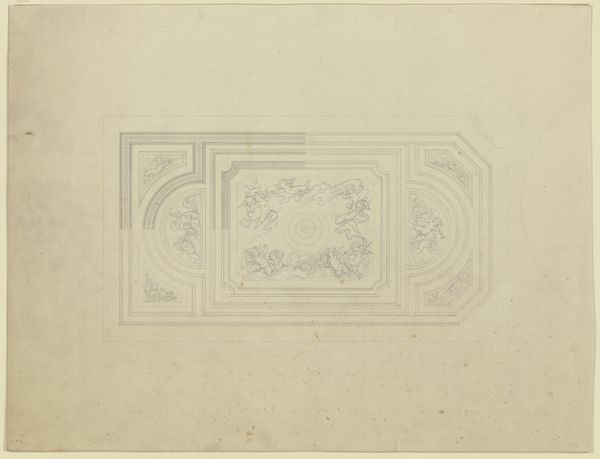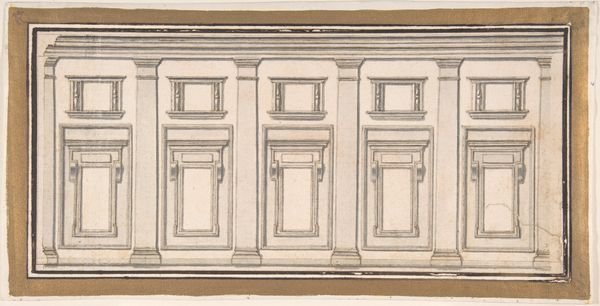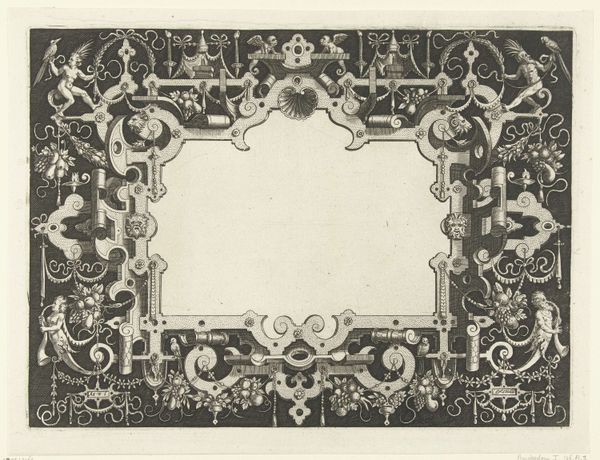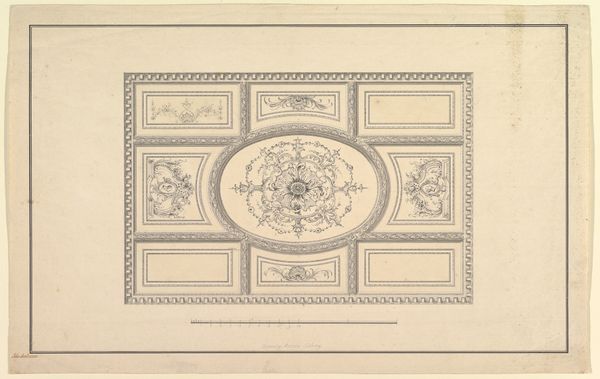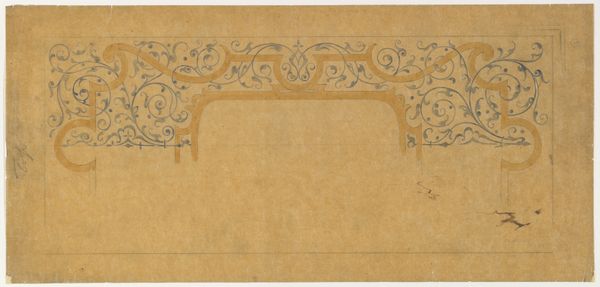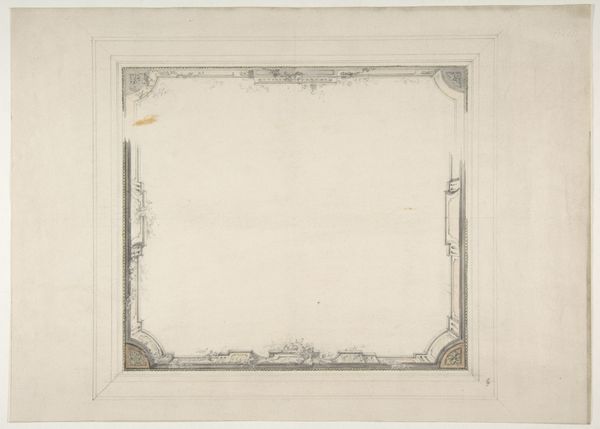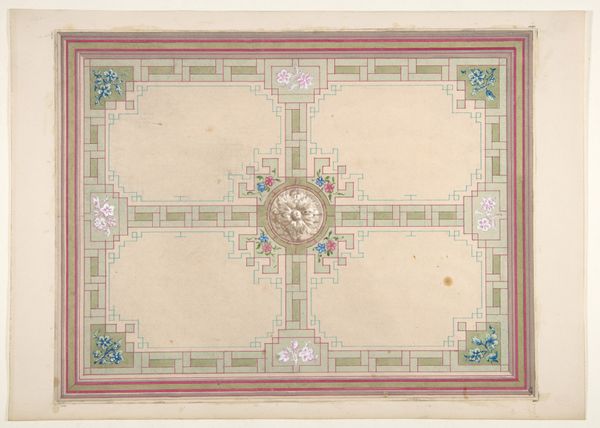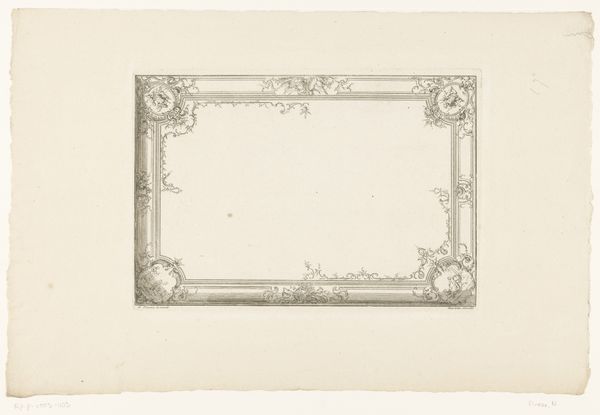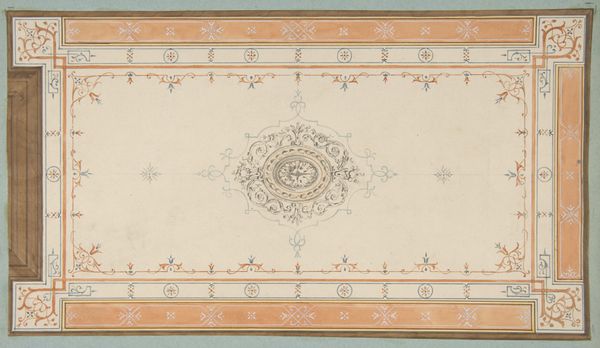
drawing, print, paper
#
drawing
# print
#
paper
#
geometric
#
line
#
academic-art
Dimensions: Overall: 18 7/16 x 11 in. (46.8 x 27.9 cm)
Copyright: Public Domain
Curator: Jules-Edmond-Charles Lachaise's "Design for a Ceiling," created sometime between 1850 and 1900, offers us a glimpse into academic art through drawing and printmaking. The work is on paper and currently resides here at the Metropolitan Museum of Art. Editor: My first thought is, “what’s missing?” The meticulous geometric pattern around the edge seems to imply an intention for something central, some grand symbolic image. Yet the center remains untouched. Curator: Precisely. That negative space holds so much potential, doesn't it? It acts as a threshold inviting diverse readings depending on cultural and personal inclinations. Is it longing, anticipation, or maybe it mirrors societal uncertainties during a transformative period in architectural design? Editor: I’m drawn to the geometry itself. Notice the subtle variations in line weight and how the light interacts—or, perhaps I should say, doesn’t interact—with the drawn forms. There’s a sense of almost sterile precision, a control over form that borders on rigidity. Curator: Rigid yes, but what might appear like a mere arrangement of lines hints at larger, complex systems. This linear elegance channels a pursuit of balance reminiscent of classic architectural values, echoing an era defined by social change and an impulse to revert to older standards. Editor: Yet there is some rebellion against classicism evident here, too, isn't it? While Lachaise adopts classic shapes and symmetry, he presents them devoid of heavy ornamentation; the space is left open to alternative perspectives. Curator: Absolutely. And in that openness we discover dialogue between the classic and contemporary, revealing art's power to weave multiple narrative threads, mirroring shared history and individual emotions in one piece. Editor: It certainly provides an interesting exercise in structural composition, playing with what is present just as much as what is conspicuously absent. Curator: And understanding this push-and-pull reminds me art history is a perpetual act of reinterpretation, with designs like this inviting fresh understanding as the cultural landscape evolves.
Comments
No comments
Be the first to comment and join the conversation on the ultimate creative platform.
